What was once viewed as the biggest mistake in horology, is now one of the most coveted timepieces in the world. That’s right, we’re talking about the Rolex Daytona.
When it was initially released, Rolex almost had to scratch the project because sales were so poor. It was the 1960s and for thirty years, Rolex had already been producing chronographs. However, when Heuer launched the Autavia in 1962 and the Carrera a year later, there was a boom in popularity and the chronograph became the world’s most wanted complication.
Now one could argue that Rolex had been making the Daytona for awhile, although it was never actually coined as such. In fact, we have to look back at the history of Rolex to find the inspiration behind one of the world’s most recognizable watches.
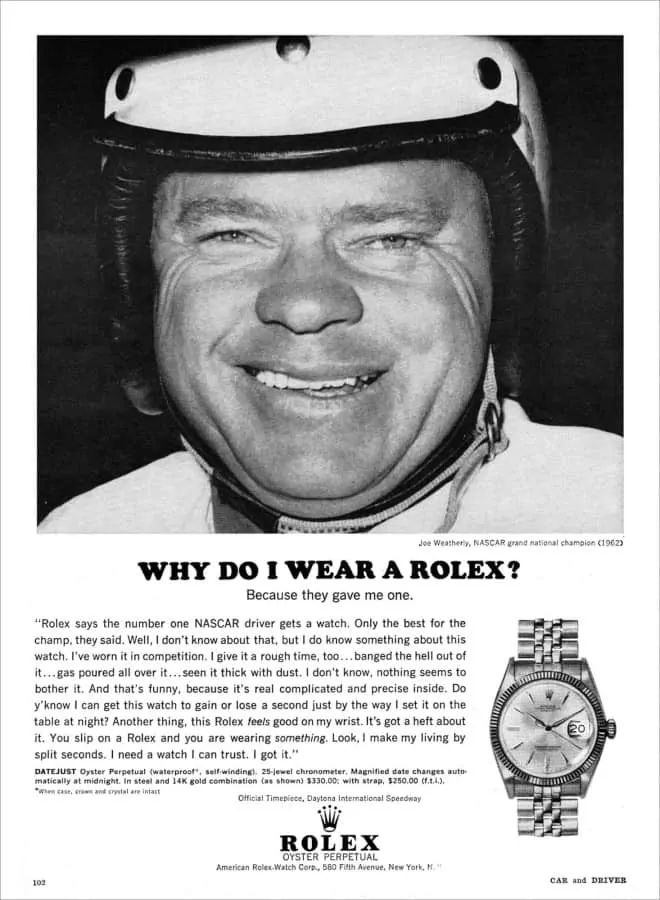
The History of the Daytona
The year was 1935, just a few short years before the world went to war for the second time. A young man from Maryland was turning 26-years-old and decided to leave home to pursue a dream. As a fan of the legendary racer Sir Malcolm Campbell, this young man ventured forth to Daytona Beach, Florida where he planned to make use of the skills he acquired as a young boy when he raced his father’s Model T Ford instead of attending school. The man’s name was William France, and he would later become the founder of NASCAR.
Sir Malcolm Campbell was a legend. Shortly after the First World War, he left his home in Britain and ventured to Daytona Beach where he set multiple land speed records. Receiving international press, he drew the attention of Hans Wilsdorf, the founder of Rolex. In a short time, he became the voice and the face of the Rolex watch brand. From there, Rolex’s relationship with auto racing would grow and get bigger once the young William France started NASCAR.
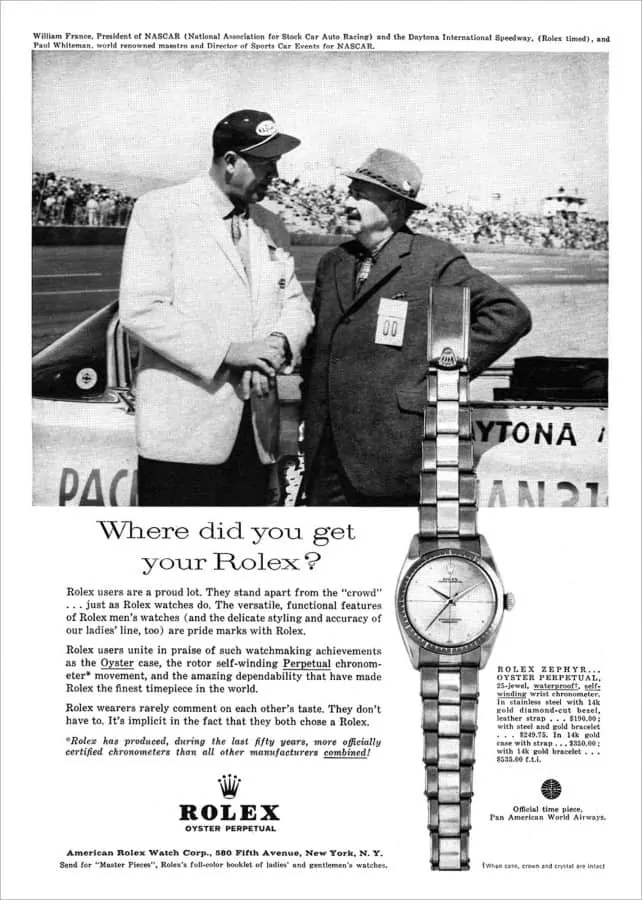
Fast forward to 1955, and the chronographs Rolex started producing back in the thirties would be featured on a watch that looked eerily similar to the Daytona, but sold under as the Rolex Chronograph Reference 6234. Visually, it was remarkably close to the modern Daytona, but instead of the automatic movement, it was manually wound. Sales were pitiful, and Rolex barely squeezed out 500 units a year. Five years later and looking to make something from their investment, Rolex decided to revive a name it had registered a few years prior. The chronograph watch was then rebranded as the Rolex Cosmograph and they introduced it again in the mid-sixties yet again as the Rolex Le Mans Chronograph.
Legend has it that sometime in the sixties, Rolex decided to capitalize on their relationship with France’s new company NASCAR. Based in Daytona Beach, it is said that Rolex first began using the name Daytona on their chronographs, but only in very limited quantities.
Unlike the chronographs Rolex had previously built, the first versions of the sports chronograph in the sixties changed from subtle and more elegant watches to resemble a very masculine and rugged timepiece that Rolex hoped would compete with Heuer and Omega. Rolex had developed a reputation for making tough watches and learned that Omega had created the Speedmaster with the hopes of sending it to the moon on the wrists of astronauts. Rolex, leaving the racing circuit behind temporarily, thought they could compete with Omega and actually solidify their market share by being the first watch to go into space. It made it to testing but in the end, NASA chose the Speedmaster which was more successful than Rolex’s Cosmograph. Now that they left auto racing, Heuer had filled that void and Rolex was left in the dust with nothing to do. Executives at Rolex put their heads together and began debating how they could corner a market with their watch that was now sitting idle. That’s when they remembered their former spokesman, Sir Malcolm Campbell.
Campbell was happy to help and enlisted the help of his new friend and NASCAR owner William France. Directly competing with the Formula One circuit Heuer had capitalized on, France was excited to give Rolex the chance to represent his brand and in 1964, a relationship with NASCAR was born.
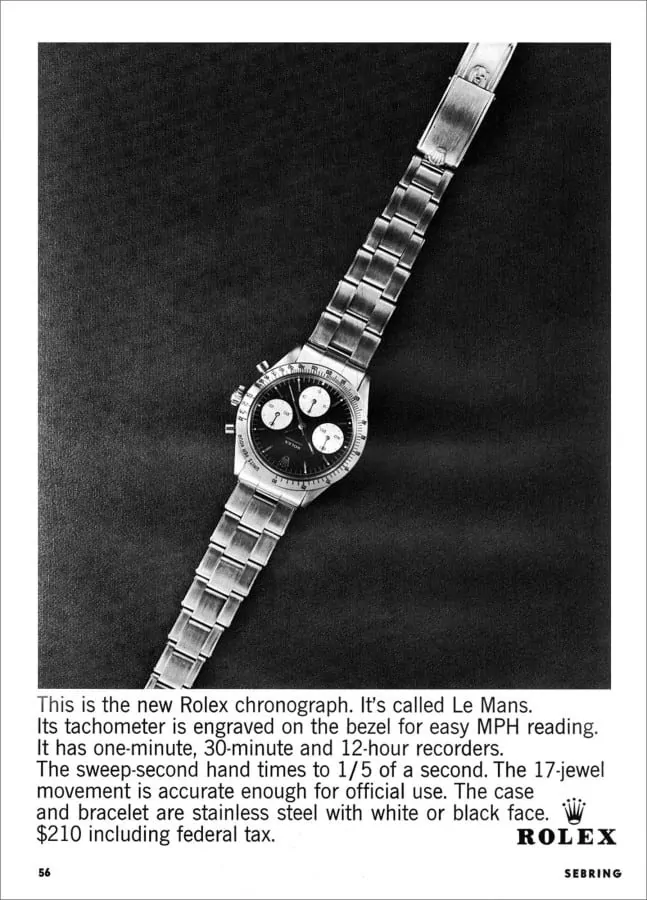
As the fanbase grew, Rolex began sponsoring races and advertising with the NASCAR logo. They sponsored winning drivers and soon, the NASCAR fans were buying Rolex watches like their favorite racers owned. The NASCAR brand was becoming so popular, that France realized he could no longer fill demands with his track, and he built the Daytona International Speedway. The Cosmograph, which Rolex named in hopes of sending it to space, would now be rebranded yet again, and the unsuccessful watch called Le Mans would lose its sophisticated French appeal for a more ‘American’ name. The largely unpopular sports chronograph that was barely selling would now be called the Daytona, but just in time for the watch world to change yet again.
As the 1970s rolled in, the quartz movement became popular. However, it lacked appeal with the more discerning watch collector who still favored the intricacies of the manual movement. For many collectors, that was art and only the wealthiest of men could afford them. The benefit for Rolex was that the quartz movement was marketed for the everyman, so Rolex introduced the automatic to their line and fans began to flock. The Daytona became a hit and used movements supplied by Valjoux and Zenith, at first, constantly changing the watch before introducing an in-house movement to the timepiece.
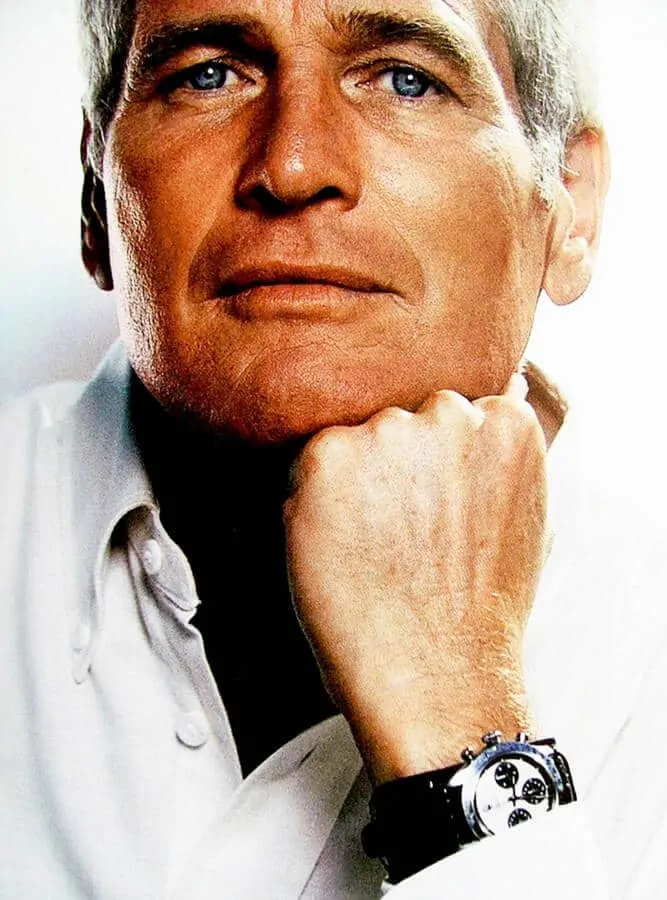
Paul Newman and the Daytona
Hollywood’s leading man was rugged and stylish. He was suave, handsome and he could tie a tie or fix an engine. His name was Paul Newman, and he was as synonymous with the racing circuit at NASCAR as he was with films in Hollywood.
In 1972, Rolex was still struggling to develop a fanbase for this model. They had just introduced the Daytona, and although things were about to pick up for them, the Daytona watch was considered a joke. The watch that now sells for thousands of dollars and far higher couldn’t even be sold for a couple of hundred at the time. That is until Paul Newman started wearing one and the Daytona started to become synonymous with racing.
In the racing season of 1972, Paul Newman put on his first Daytona, and he never took it off. Immediately, advertising execs at Rolex began to capitalize on Hollywood’s heartthrob wearing their failure on his wrist. Women wanted him and men wanted to be him. So much so, that if a man didn’t buy a Rolex Daytona because he wanted it, chances are his wife would. Thanks to Newman, the Daytona would become one of the most popular watches in the world.
Today, we often hear about the Paul Newman Daytona like it’s a model. Let’s set the record straight. It’s not. In fact, Newman owned a number of Daytona’s, and when one is referred to today as a Paul Newman, it’s because the style of the watch is the same as the one Paul Newman was most famous for wearing and the style Rolex capitalized on to advertise that you could be like Paul Newman. If you wore his watch.
The famous Paul Newman Daytona watch Paul Newman with a Daytona on his wrist
By the 1980s, Rolex came up with a brilliant marketing scheme and sponsored a series of books written about Paul Newman. The first one, published in French and called ‘Paul Newman Les images d’une vie’ was a hit and more books soon followed. They made sure to heavily feature the watch and the one that stands out today is the Rolex Daytona Reference 6241 in stainless steel. It has a white dial and black subdials with a black outer track that borders the dial and matches the subdials.
In the end, it’s just a style, but it’s a style of watch that sells at auction for hundreds of thousands of dollars. Some changes have been made such as the addition of red markers and the red Daytona logo which Newman’s watch didn’t have, but in the end, the true Paul Newman Daytona is just a replica of the aesthetics in the most famous picture ever taken of Newman. The one in the books sponsored by Rolex.
The watch that once sold for under $300 and still wasn’t wanted was now flying off the shelves so quickly that it required a wait list because they couldn’t manufacture them as fast as they were selling. On average, buyers now had to wait for three years before they would receive their watch. By the mid-1980s, the Rolex Daytona was one of the most famous timepieces in the world, coveted and revered by collectors. The rarity caused by the waitlist only enticed more collectors to buy it, and much of that was thanks to Paul Newman and the faith he had in Rolex.
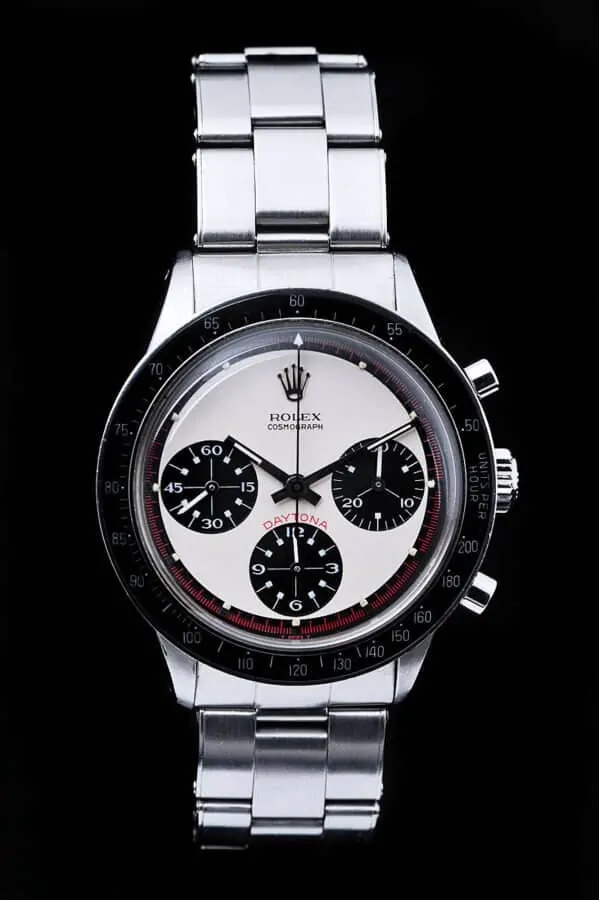
The Rolex Movements
In the sixties, it wasn’t unusual for top watch manufacturers to use movements created by other brands. Rolex was no exception. At the time, the watch that would become the Daytona barely sold, and so the thought of investing in a movement for something lacking potential wasn’t even considered. Instead, Rolex used the Valjoux caliber 72 which was the most popular movement used in well-made chronographs at the time. Other than Omega’s Speedmaster, most of the big-name companies that Rolex competed with were using the same movement. It was well made, and Rolex relied on the aesthetics and design of the watch to separate them from the competition.
The Valjoux 72 worked well. It kept fairly accurate time, and it didn’t suffer from any design flaws. Most important, it was inexpensive and at the time, chronograph movements were difficult to make. It was a proven concept. The only flaw was that it was a manual movement which meant that the watch needed to be wound by hand.
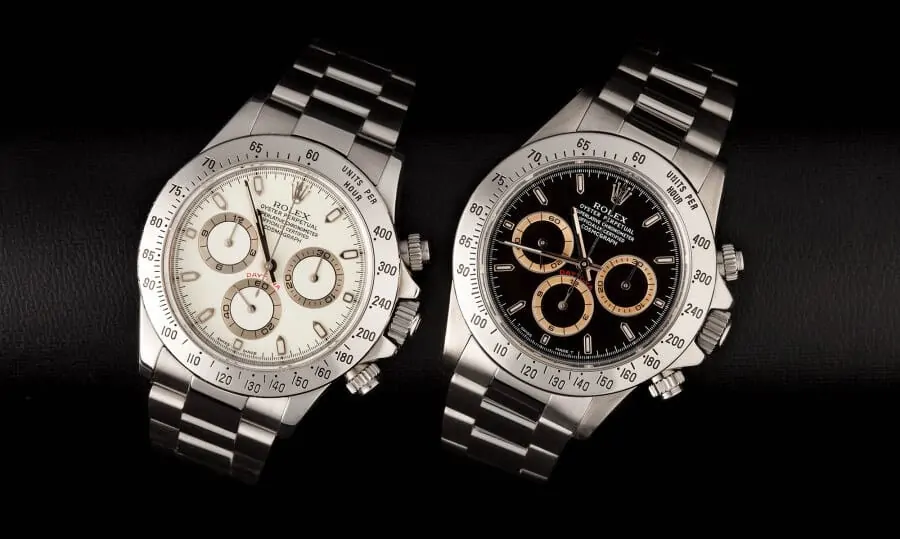
Rolex began to notice that chronograph wasn’t selling nearly as well as their competitors at Heuer, Breitling, and Omega. Both flying and Omega were using the same movement in their chronographs, but they were also far more popular due to Heuer’s visibility with Formula One and Breitling’s relationship with pilots. Rolex decided it needed to personalize the movement. Knowing it would be far too costly to create their own, they added some customizations such as a new Microstella variable inertia balance wheel and an overcoil from Breguet. They changed the name of the movement and branded it in advertising as the Rolex Cal. 722 and 72B. Then, always looking to improve, by the end of the 1960s, Rolex changed the hour recorder conveyor so that it worked better with the wheel. They did this by altering the shape and renamed the engine as the Rolex Cal. 722.1 Then, right before the dawn of the 1970s, they changed the movement again, increasing it from 18,000 VPH to 21,600 VPH.
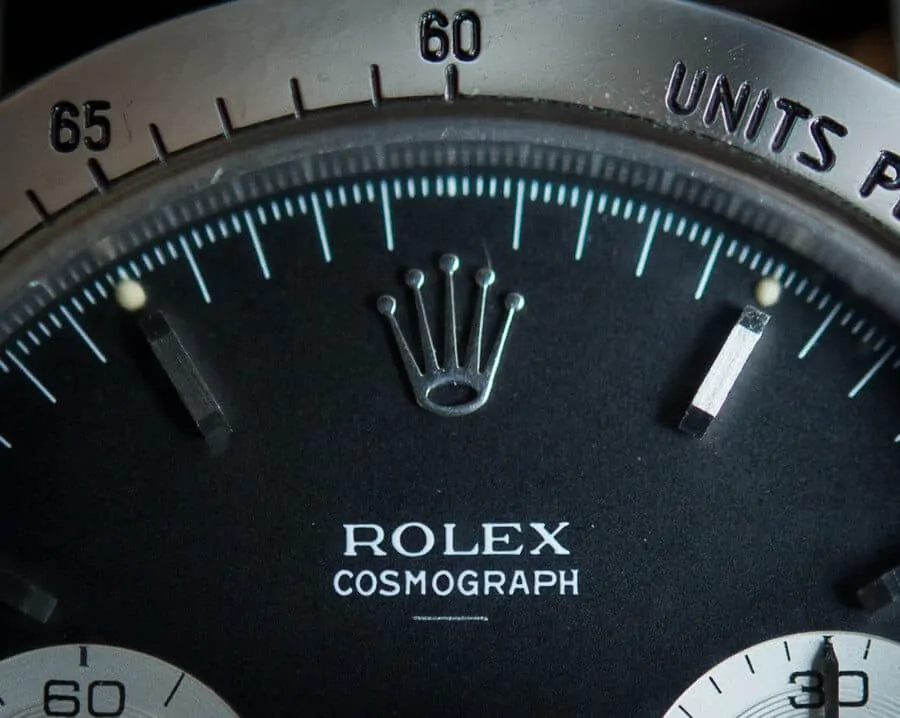
Then in the 1970s, as Rolex began its rebrand calling the Cosmograph the Daytona, they began to look for a new movement that would work with their new watch and really separate it from the pack. Coincidentally, at the same time, Zenith was getting ready to launch its new El Primero, and Rolex partnered up with them to create its new watch: The Daytona.
Knowing they still had to differentiate themselves, Rolex immediately put in the balance wheel and overcoil from Breguet that worked so well for their watches. They changed the beats from 36,000 VPH to the 28,000 VPH they previously enjoyed. They also created a new design that used a vertical clutch to operate the chronograph.
In fact, it wasn’t until the new millennium that Rolex created their own in-house movement. A masterpiece that exceeded the quality of any movement used in their chronographs before, they introduced the Rolex Cal. 4130 that was completely re-imagined and different from anything else on the market.
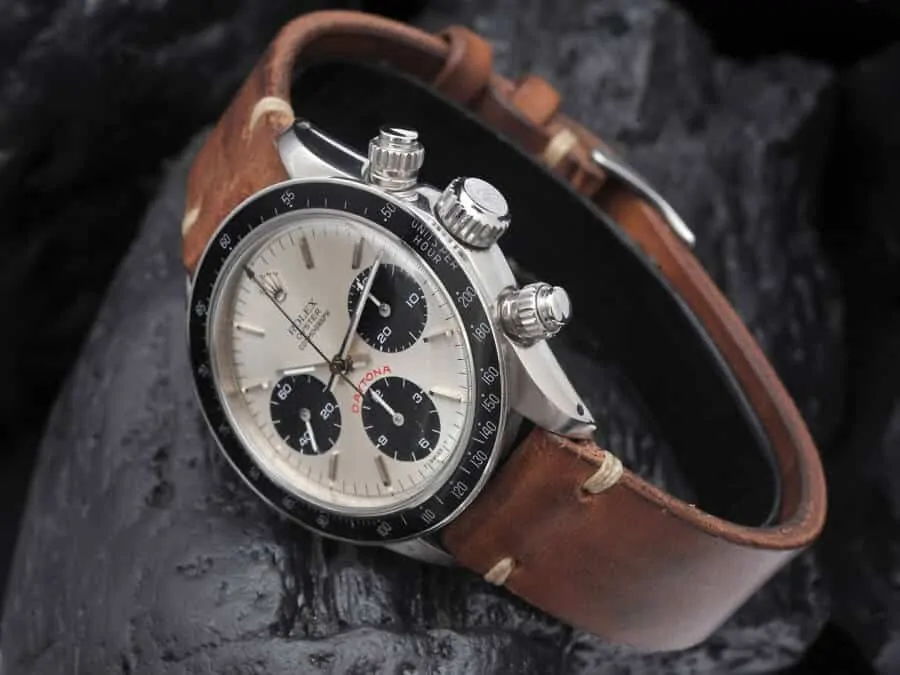
The Daytona Lineup
When you tell someone that Rolex has produced a range of Daytona’s in their line, you can almost see the wheels turning as they try and figure out why they’ve only ever seen two of them. That’s because the design only changed twice. It’s what’s on the inside of the watch that has forever been improving.
Small changes have come since the Rolex 6239 was introduced with the movement of the tachymeter from dial to the bezel and some cosmetic changes to the watch. Rolex lowered the subdials, and more options became available such as the Paul Newman dial which is called the exotic dial.
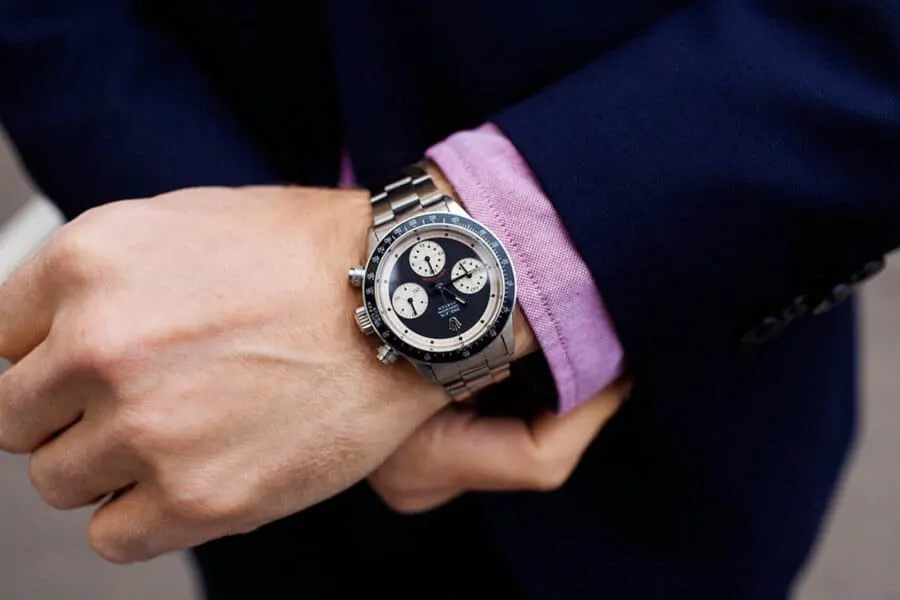
The tachymeter was removed from the dial and added to the bezel of the watch, the subdials were lowered into the watch, and the Paul Newman dial became available for sale. Screw down pushers were added to some models as was the accompanying Oyster name and later some changes to the second hand and the fonts used in the branding. Other than that and some minor changes, the biggest differential between Daytona’s is the dial and subdial color, embellishment with diamonds and jewels and whether you opt for stainless steel, gold or another material. With each change to the movement, a new reference number was introduced as was the case when a small cosmetic change took place.
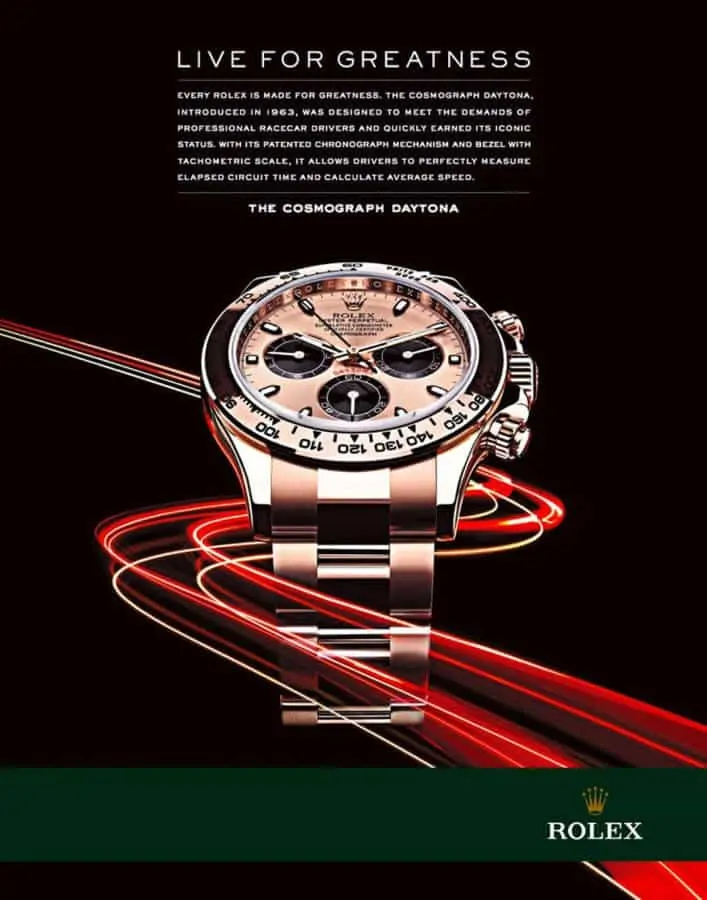
Conclusion
Today, the Rolex Daytona is available with so many options that you could own ten, and they would all be unique. The actual watch has barely changed over the years, but its reputation and value certainly has. What was once considered an unsellable watch is now one of the most sought-after timepieces on both the new and pre-owned market. It is one of the most counterfeited watches sold on eBay and other websites, and it can fetch a sale price from just a few thousand dollars upwards of hundreds of thousands based on the style, the caliber, and the look.
As far as the Daytona goes, collectors seem to prefer the vintage models. New watches are bought all the time as statement pieces and celebratory gifts. However, it’s the pre-owned models with the story or unique features that increase in value and have proven over the years to be a sound investment. To learn how to buy a watch, click here for our in-depth guide.
Next to the Submariner, the Rolex Daytona is the most recognized timepiece in the world and one that every race fan should have in his collection.
Do you own a Daytona?
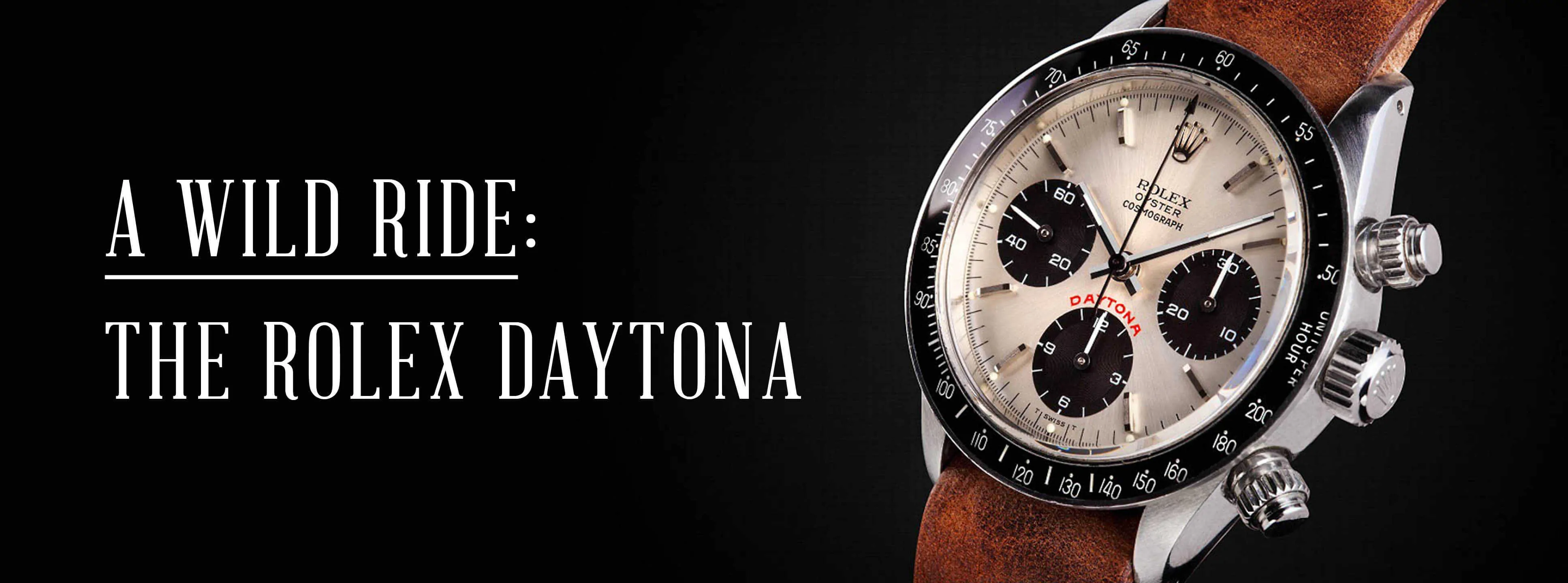
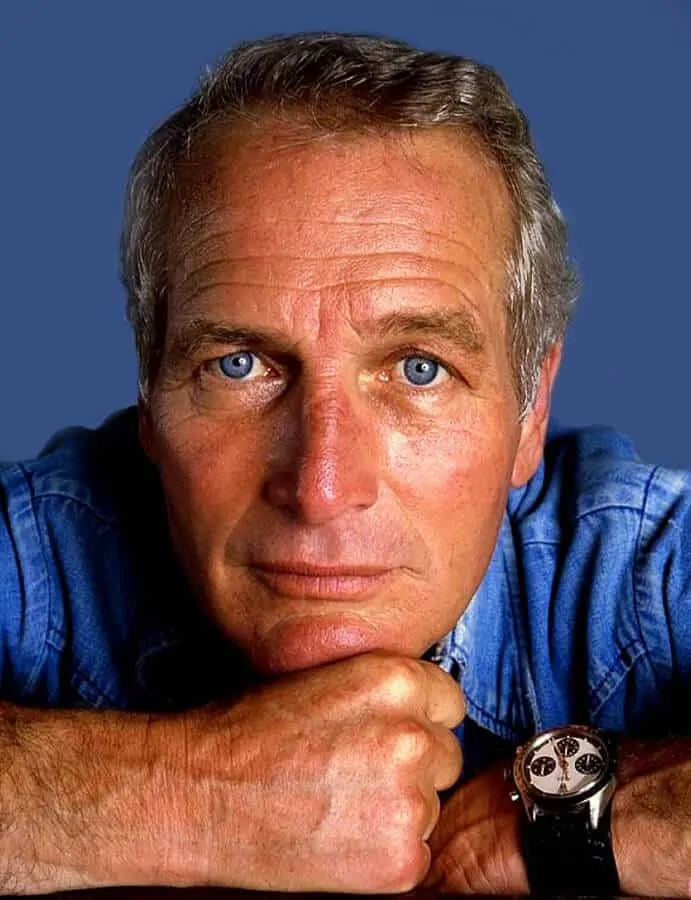
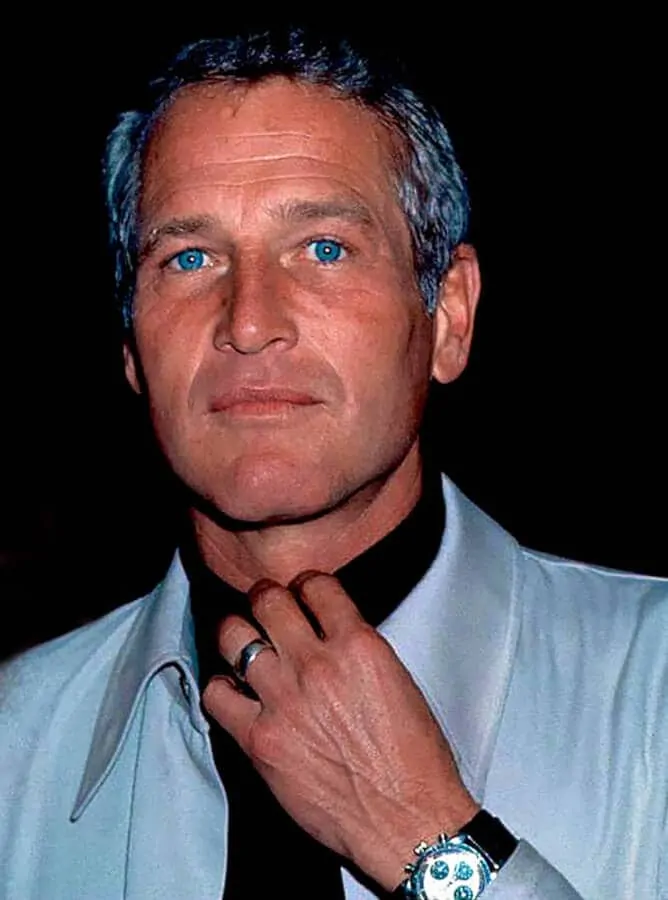
Two items:
1) What is Joe Weatherly (first ad) talking about when he says that he can get it to gain or lose a second just by the way he puts it on a nighttable? That seems to be the antithesis of reliability.
2) Note that in the third Rolex ad, they mis-spell “tachymeter” as “tachometer”. You’d think someone would have caught that.
Certainly a gorgeous chronograph!
I worked and flew as a civilian with U.S. and NATO military aviators for several years, and can honestly say that I never saw a Rolex on any pilots’ or aircrews’ wrists (including my own). Chuck Yeager advertised for Rolex, but on the several occasions on which I met and spoke with him it never occurred to me to look at his watch.
But the Daytona would certainly be my choice for a mechanical chronograph if I were to want one and could have afforded it!
Daytona is certainly iconic. They do indeed make a statement. Yet, I would say, and so does Rolex, that the Datejust is actually their most recognizable watch. Quote from their web site: “Aesthetically, the Datejust has spanned eras, while retaining the enduring codes that make it, notably in its traditional versions, one of the most recognised and recognisable of watches.” And I have to agree. I wear a 25 year old 16233 two-tone with champagne dial almost daily. Not saying there is anything at all wrong with a Daytona, but the obsession with them seems pretty crazy. And as you point out, the ones to have are the vintage ones where the likelihood of getting an outright fake or a frankenwatch is extremely high, especially with the Paul Newmans. We also seem to be in an age where tool watches like the Daytona and Yachtmaster are bought for anything but the tools they are intended to be. (More macho?) And that’s OK — whatever floats your boat, or car. Part of the fun of watch collecting. BTW: Rolex did make an Oysterquartz that has become quite a collector item as well. Very ’70s.
I recently purchased a watch from London , it is a STRUTHERS of London.
A beautiful time piece, very conservative , may I refer this to your consideration.
I purchased the stainless steel Rolex Daytona Cosmograph Ref. 6263 with the Cal. 727 manual wind movement in 1982 at the downtown Seattle Ben Bridge Jewelers. The price was $950.00 + sales tax. I sold the watch for $1500.00 in 1990. Biggest regret of my life. If I was to repurchase this same vintage 1982 model from collectors today the asking price is around $40,000.00. Arrgh.